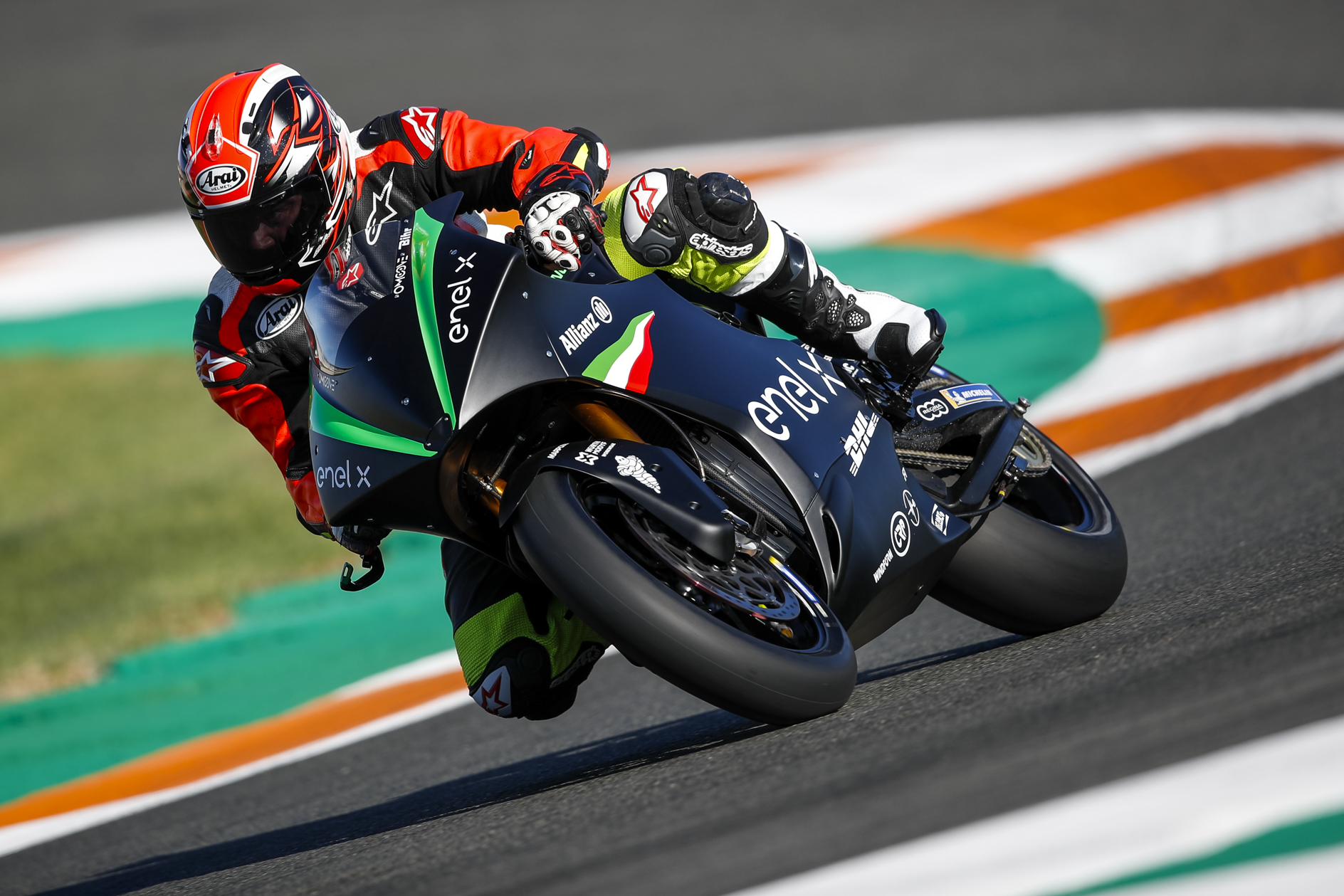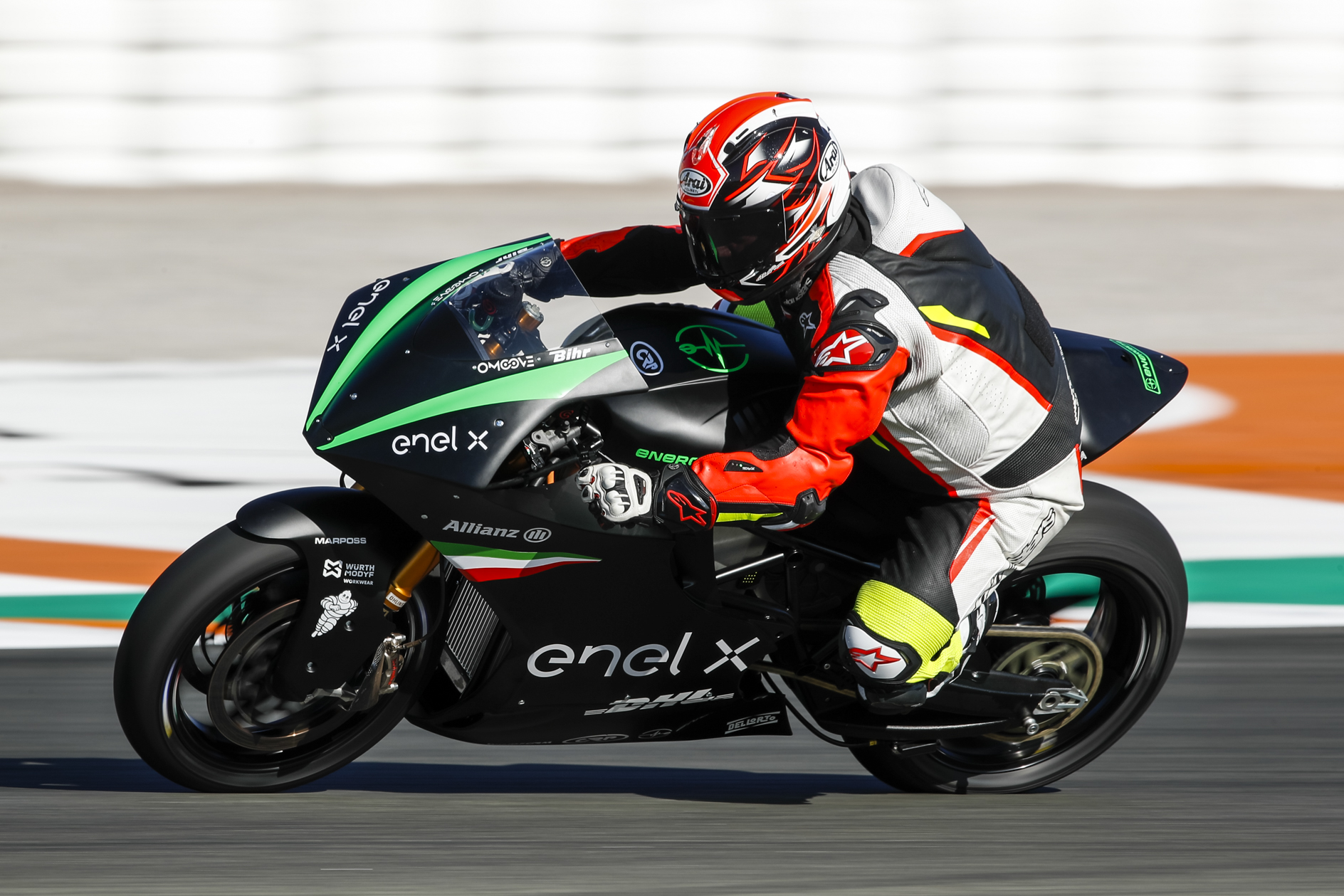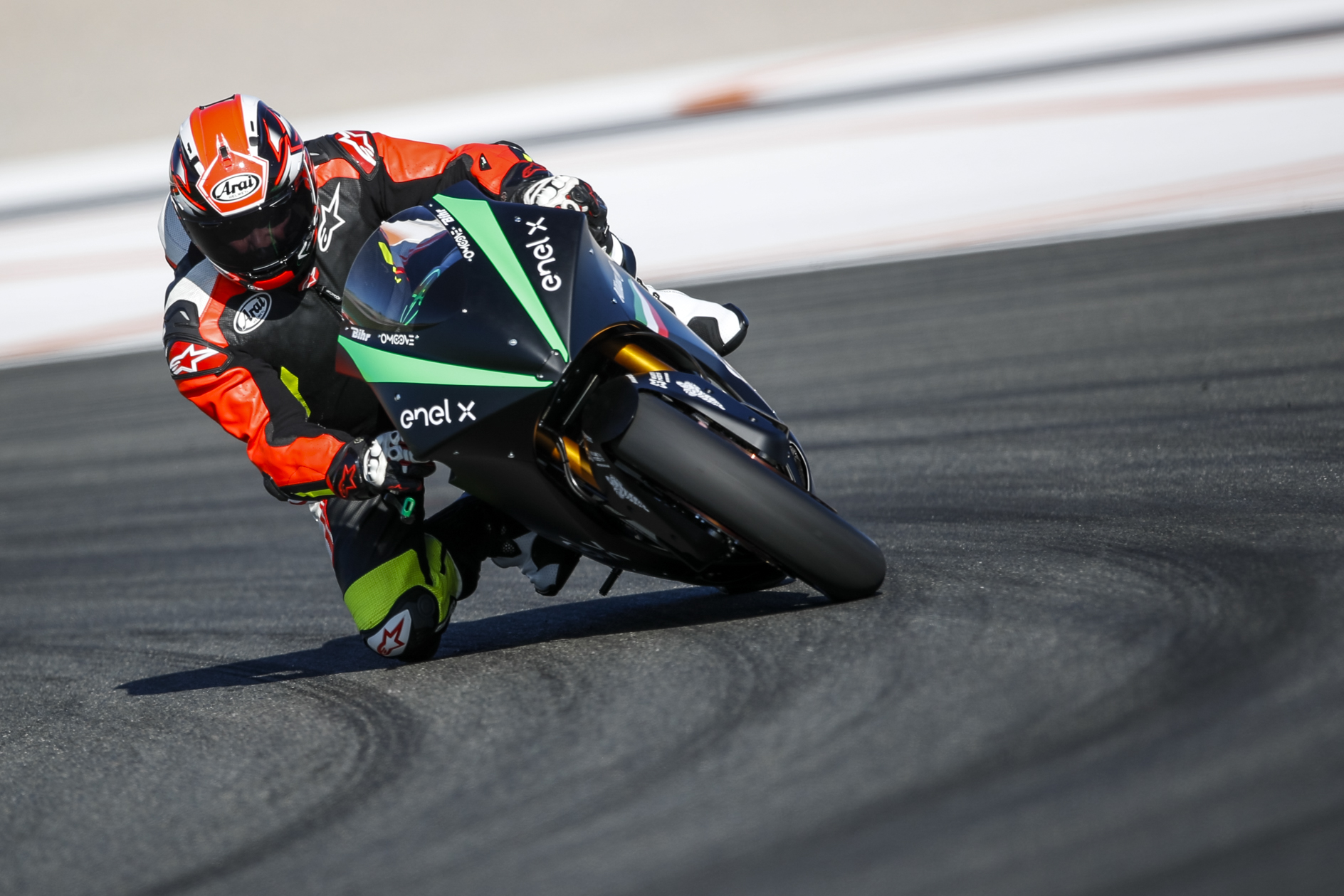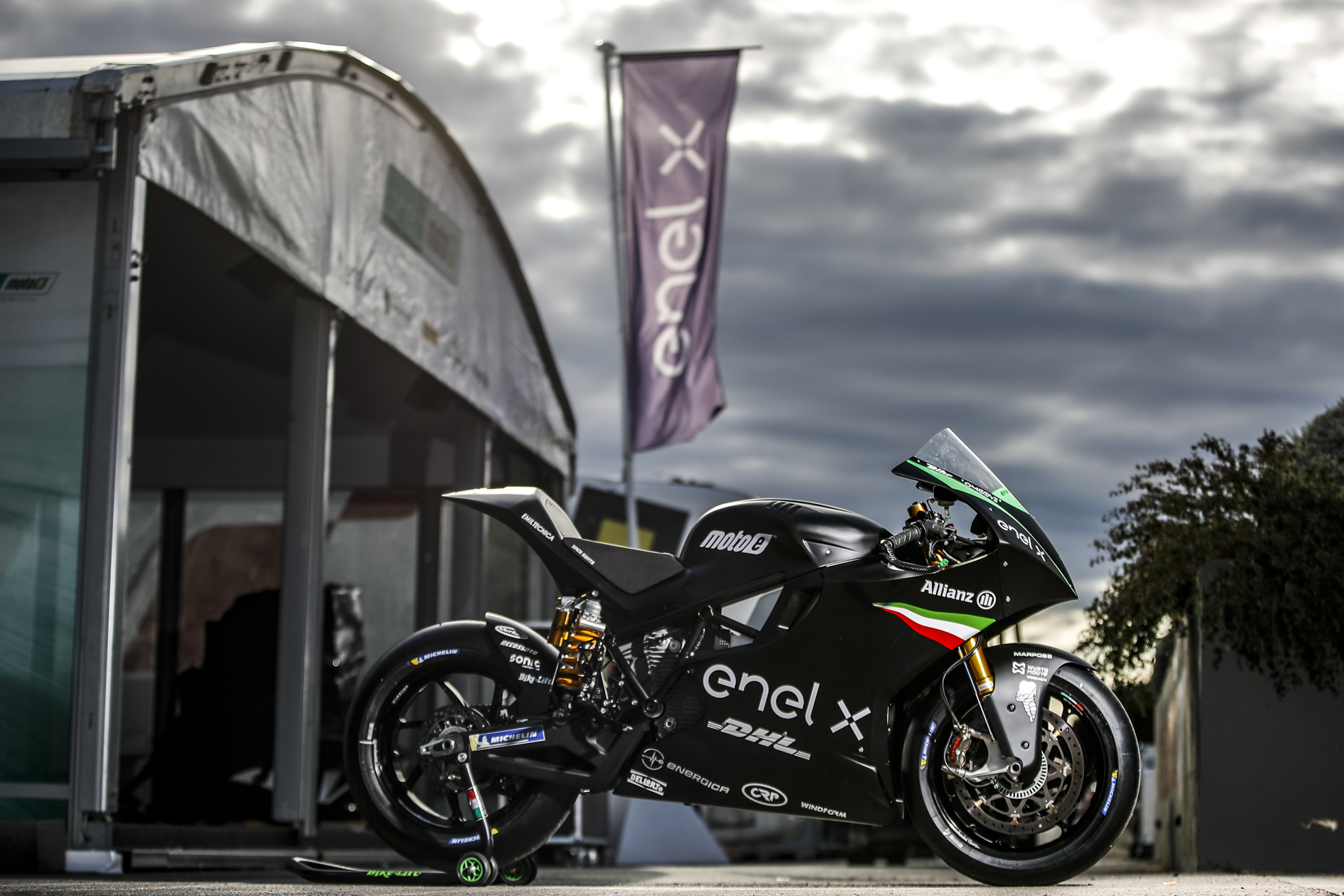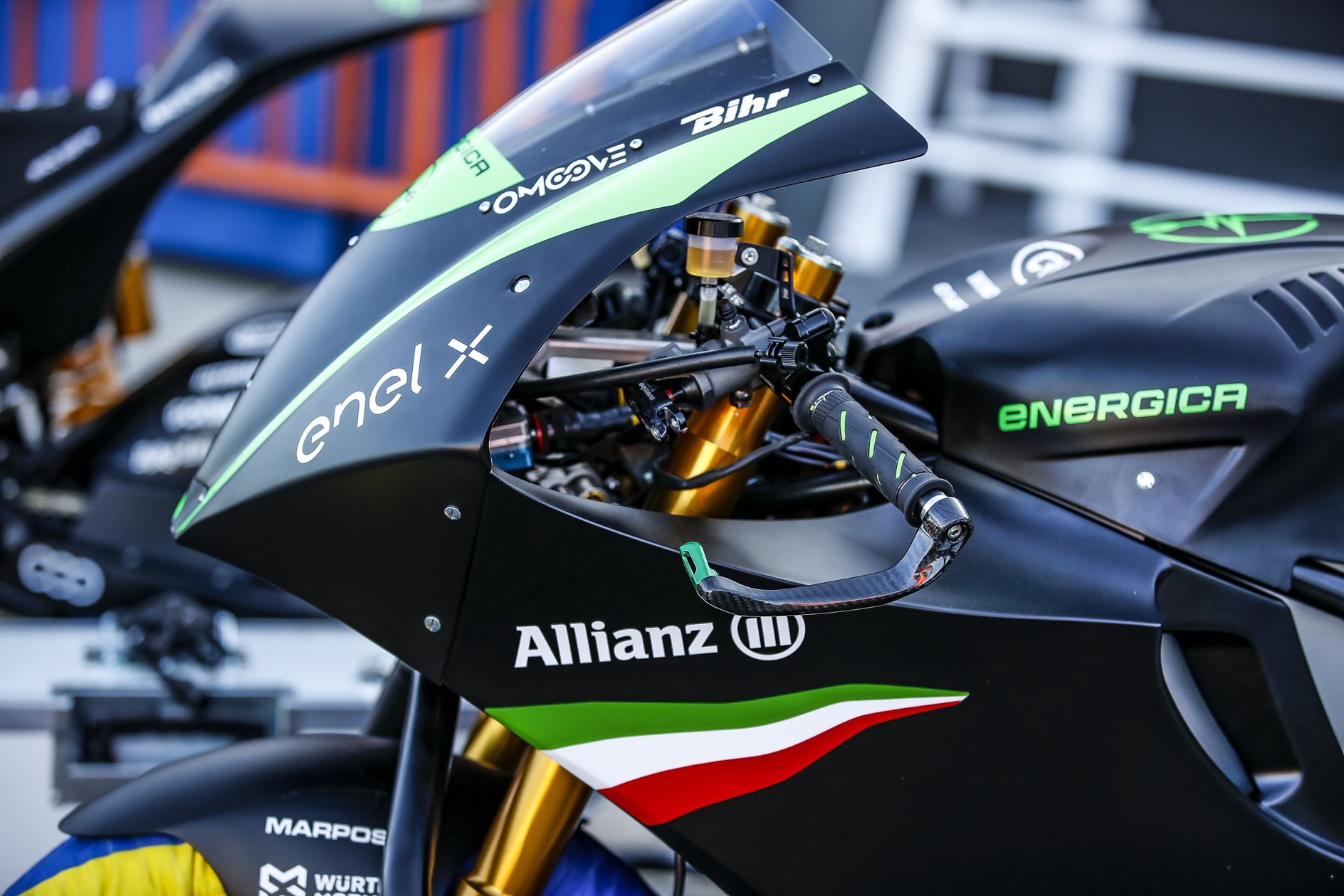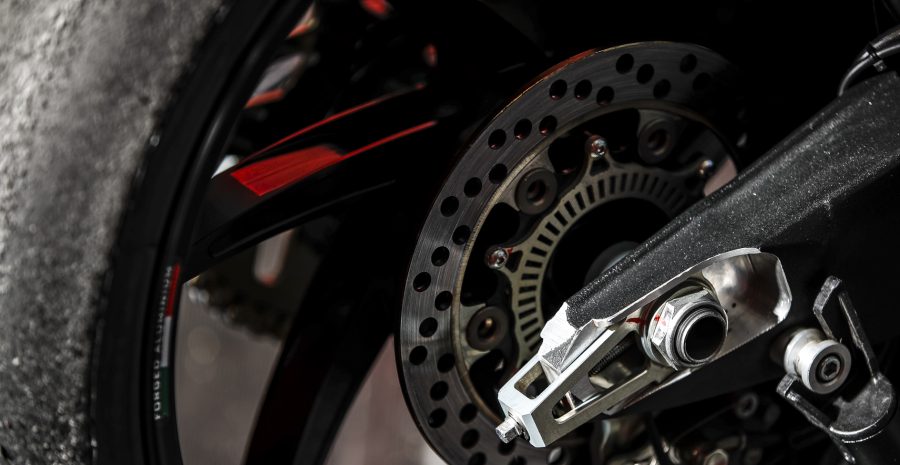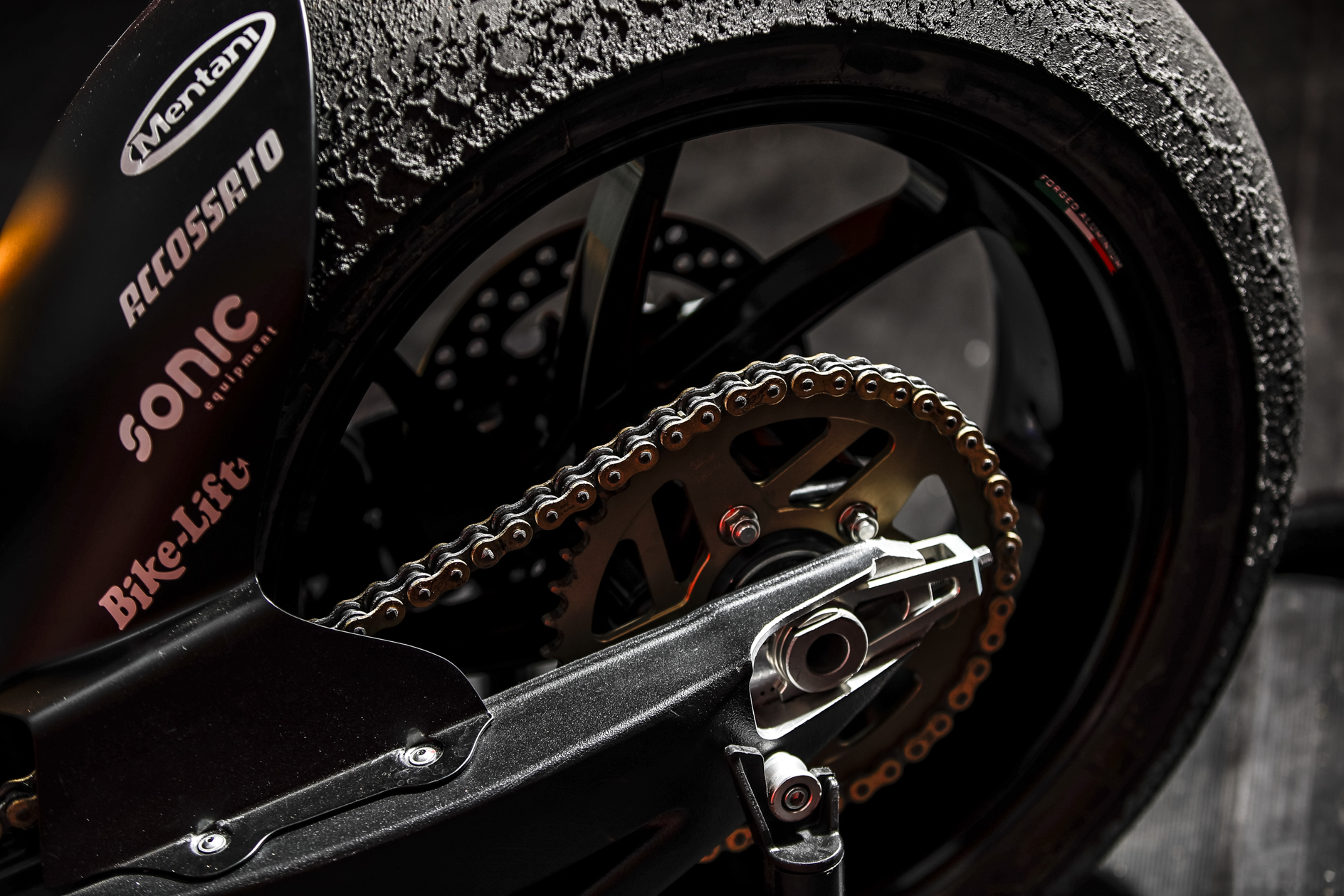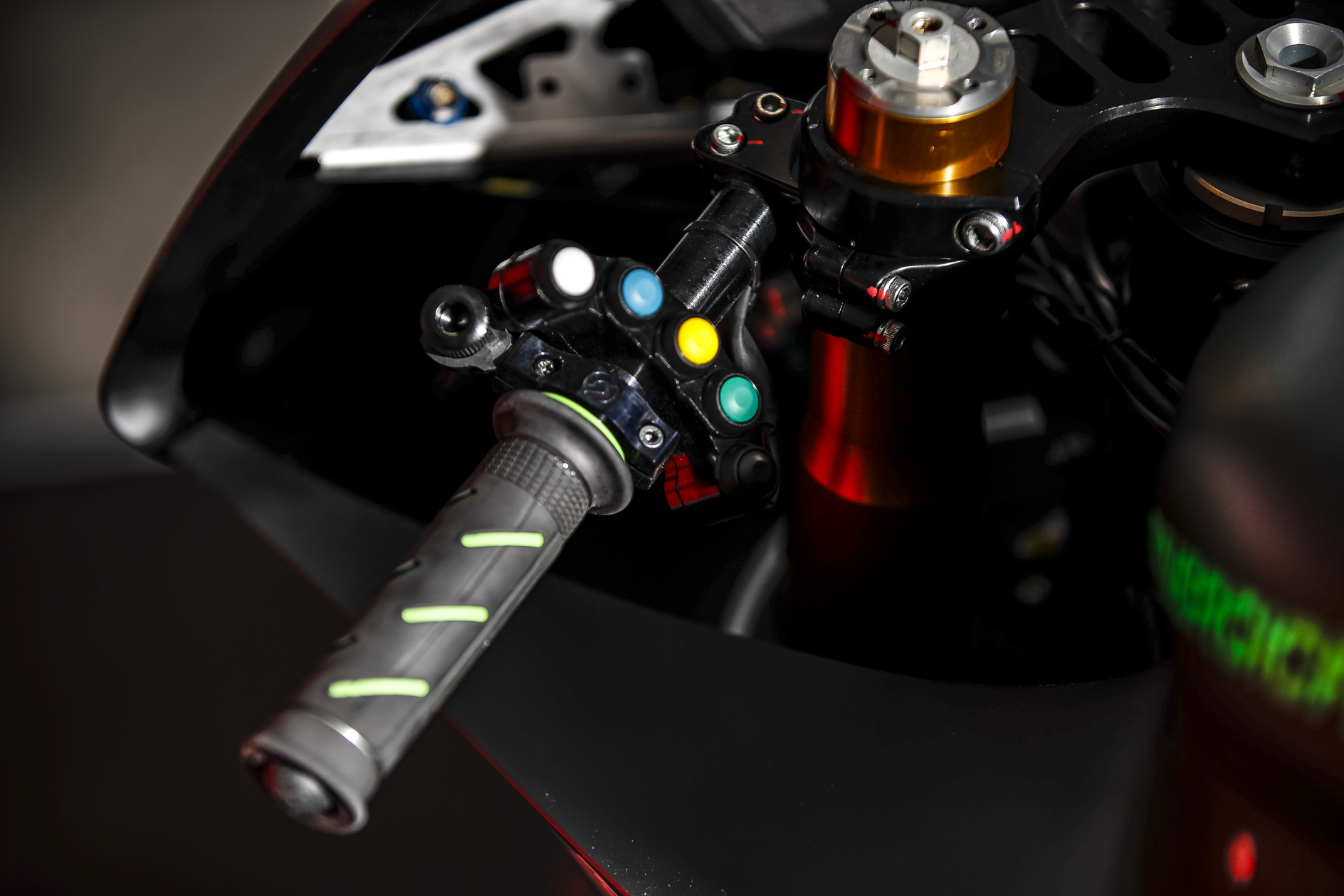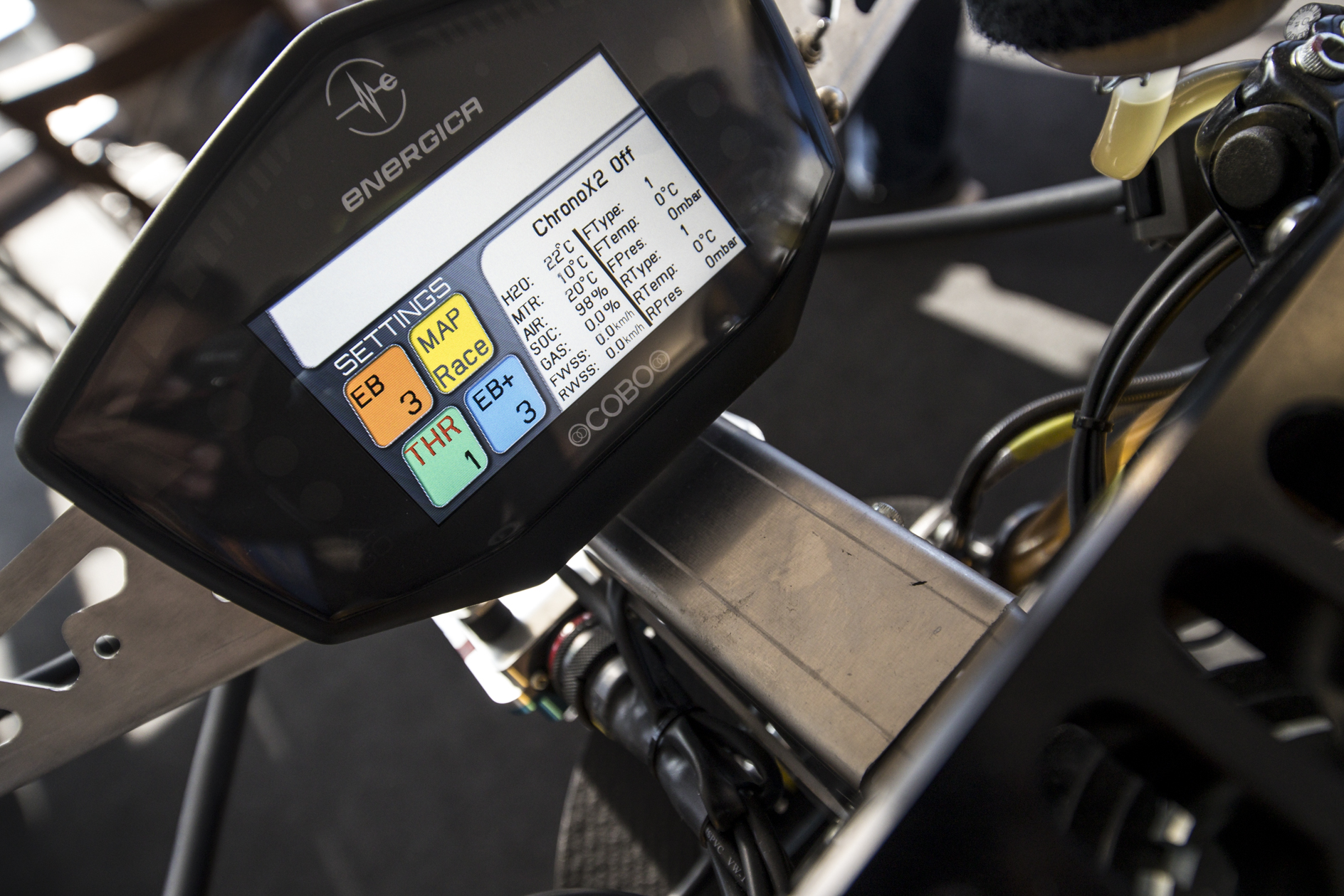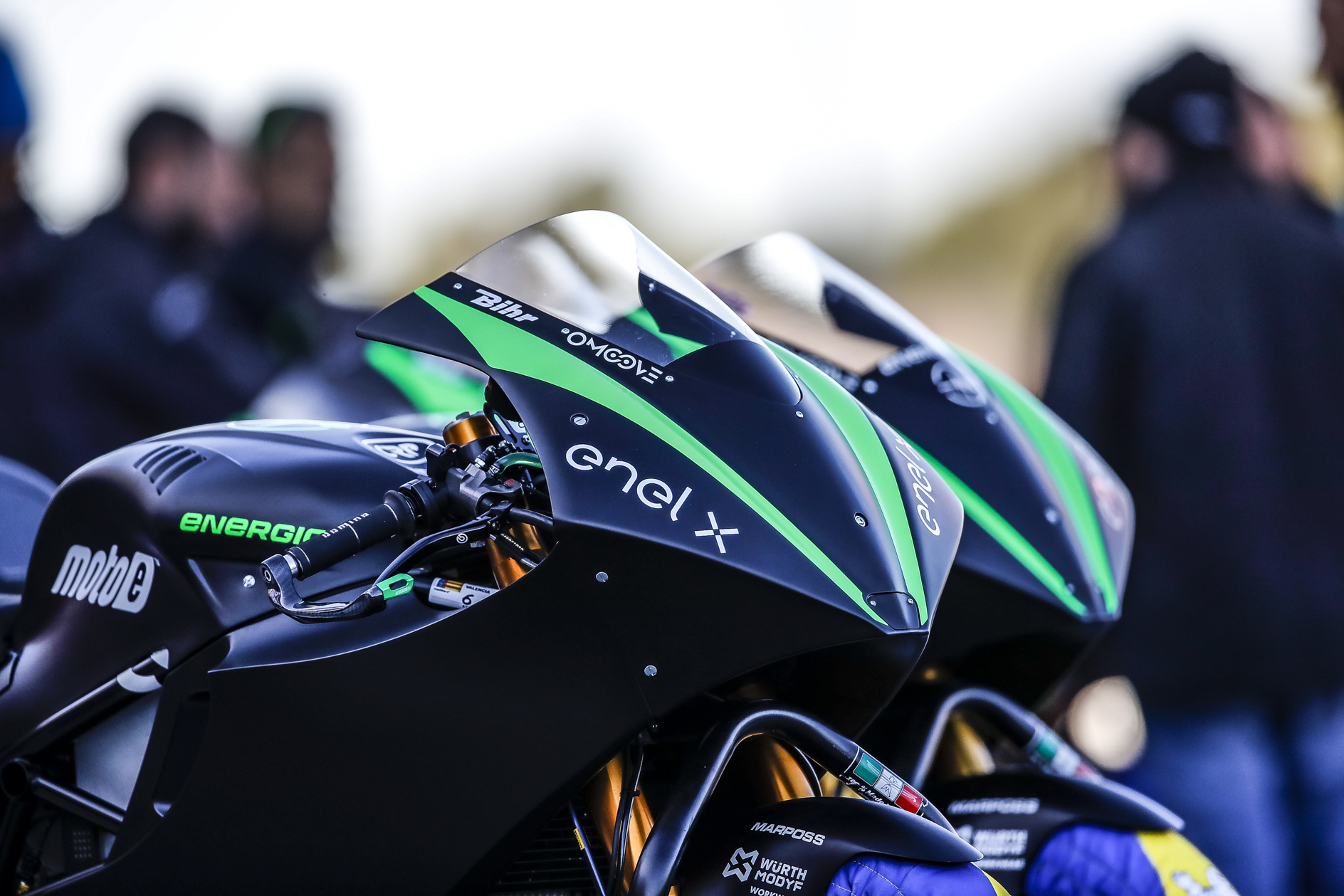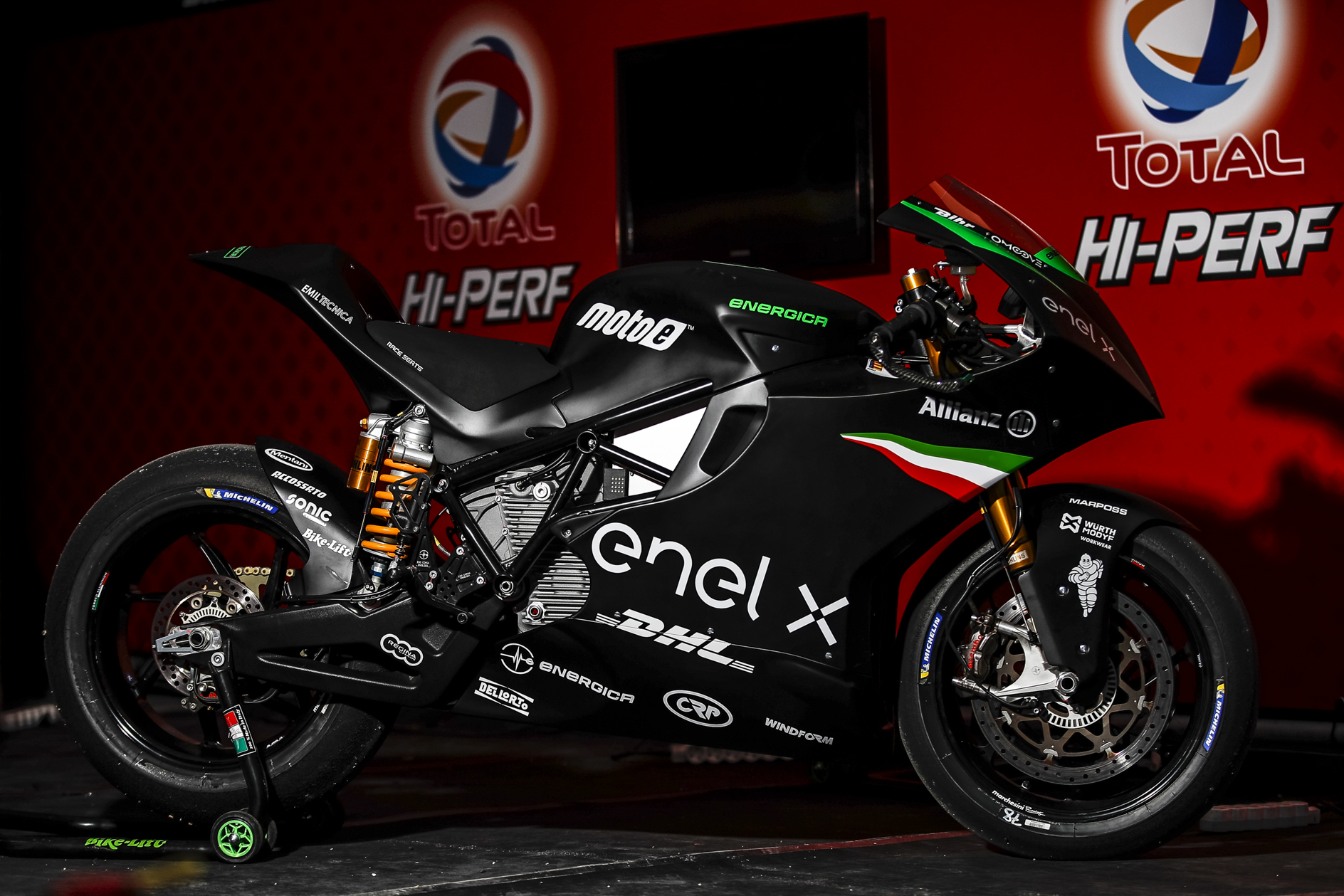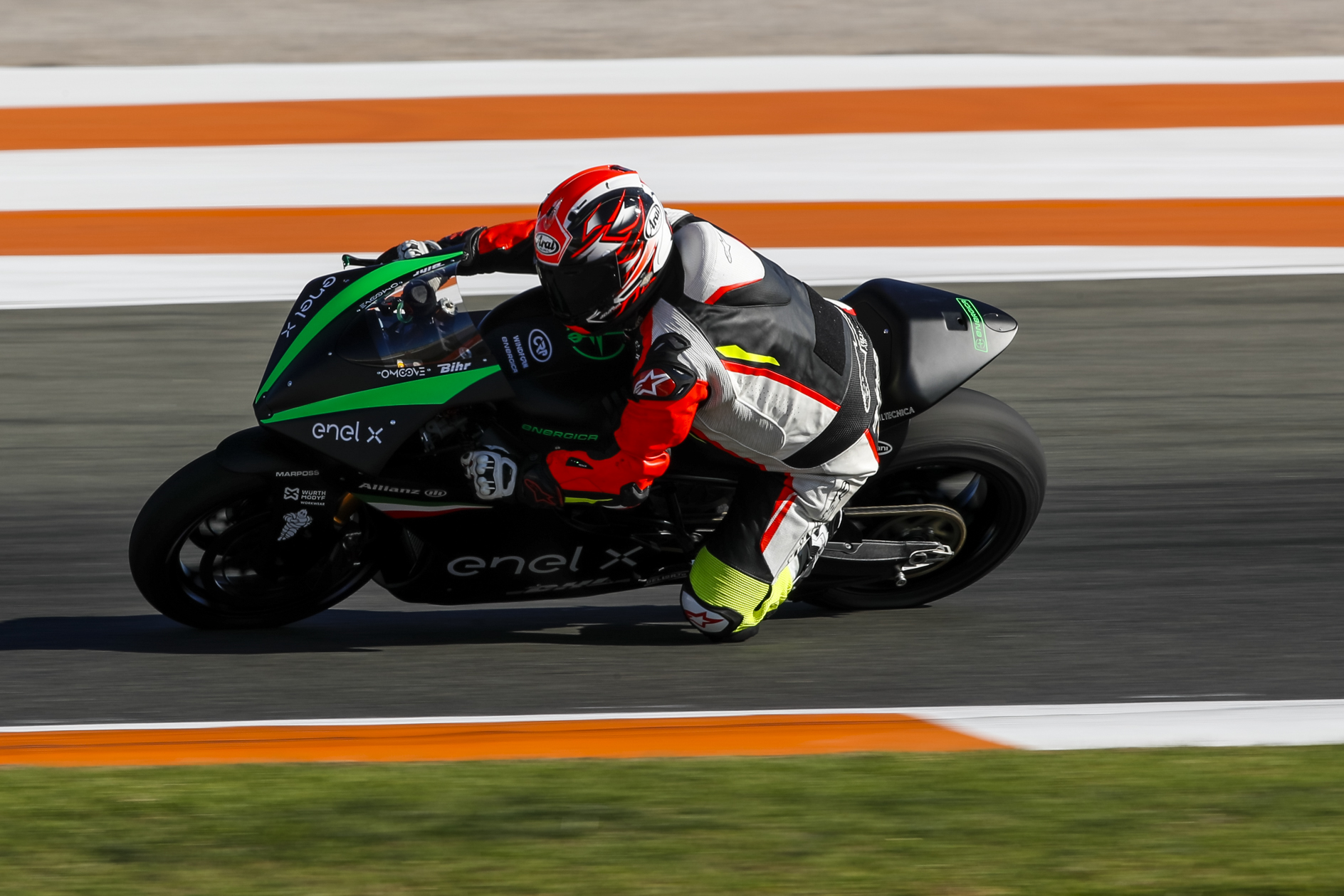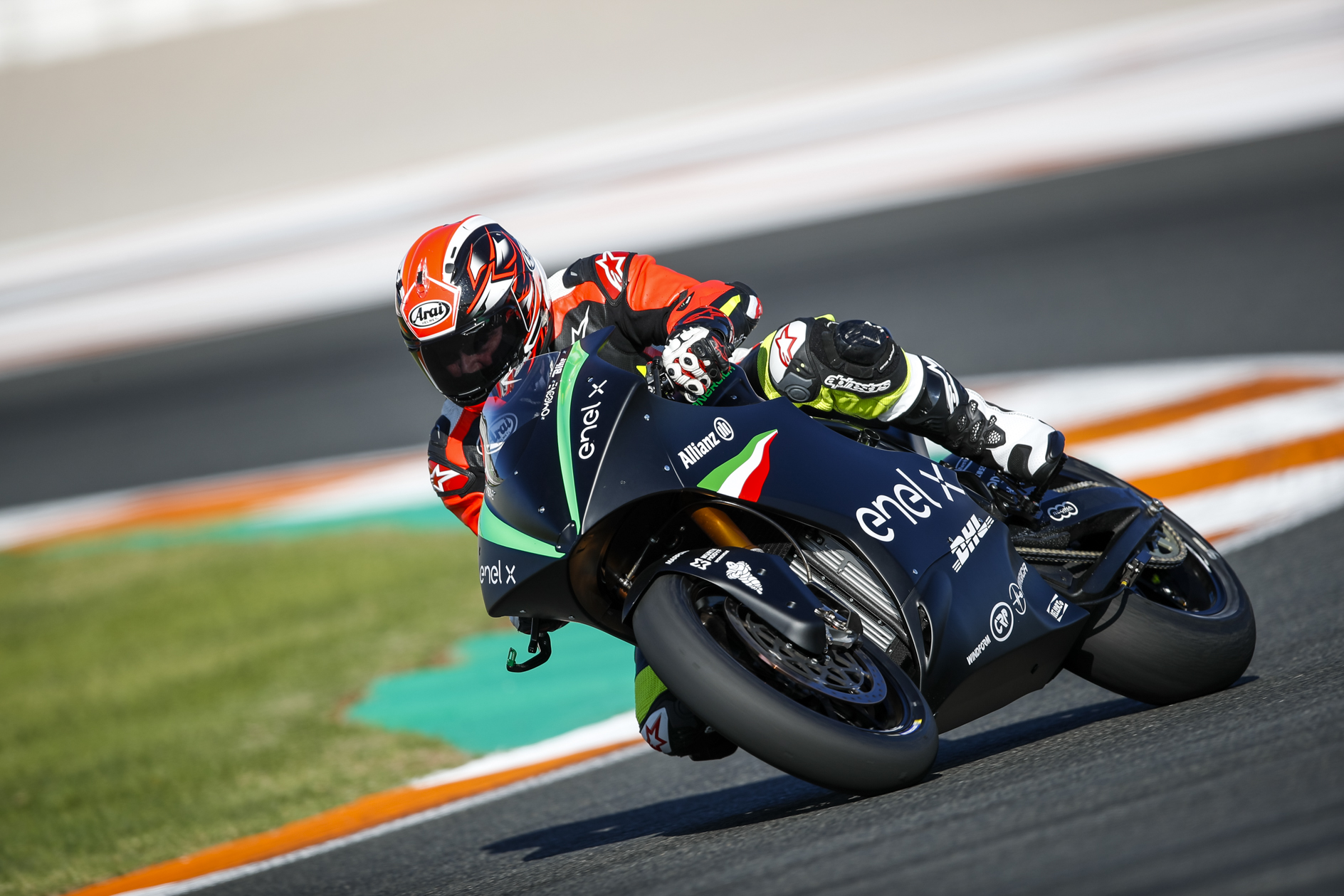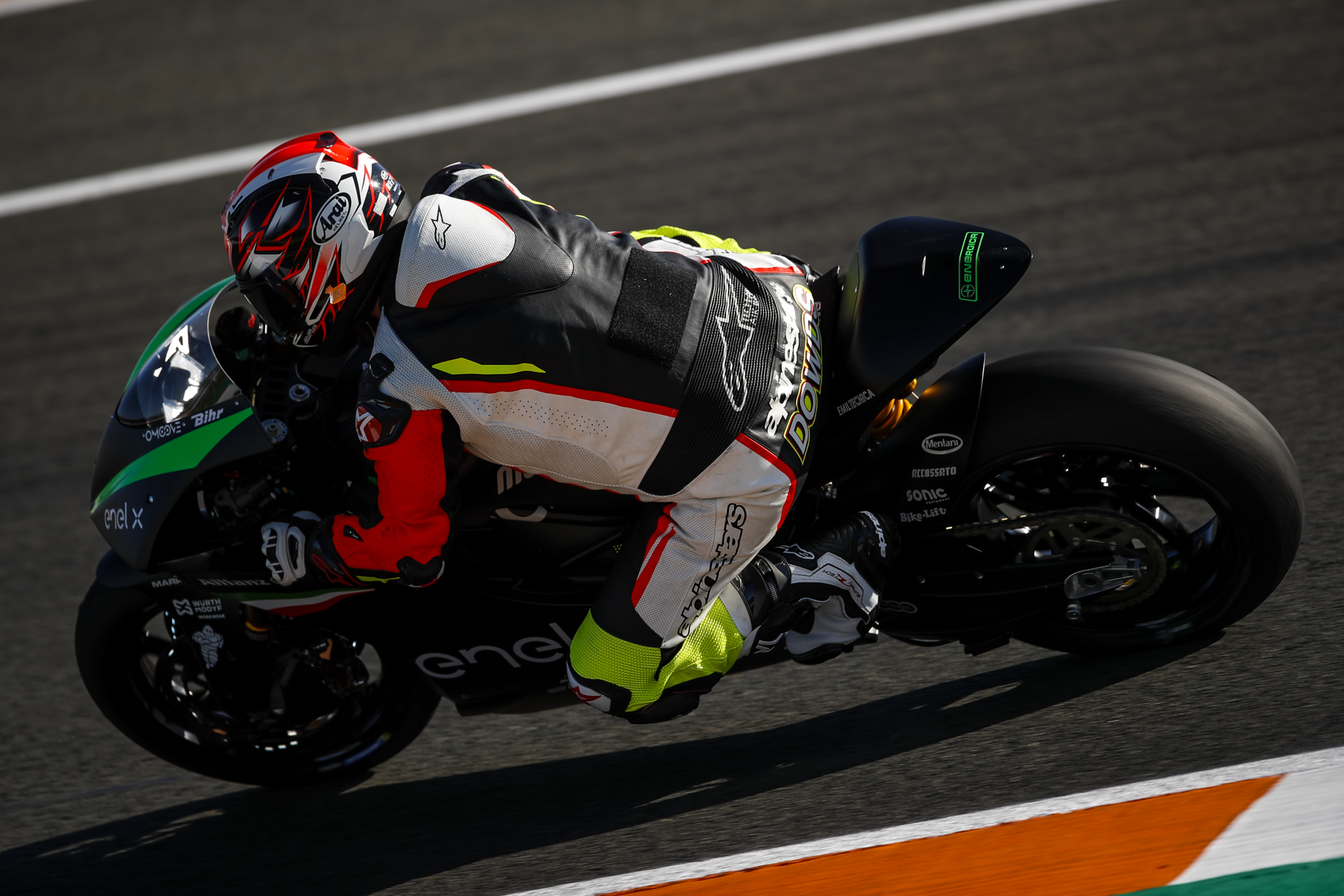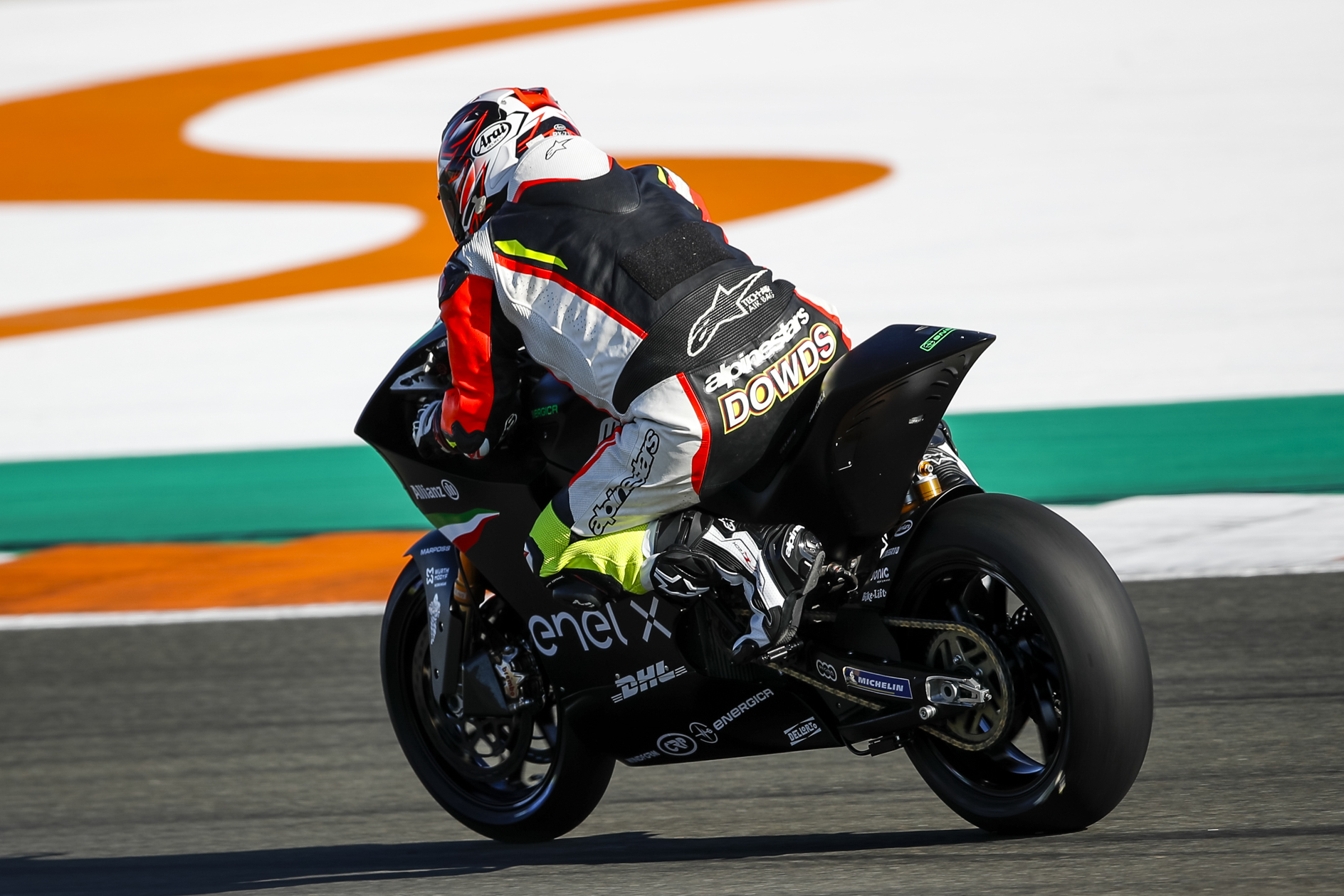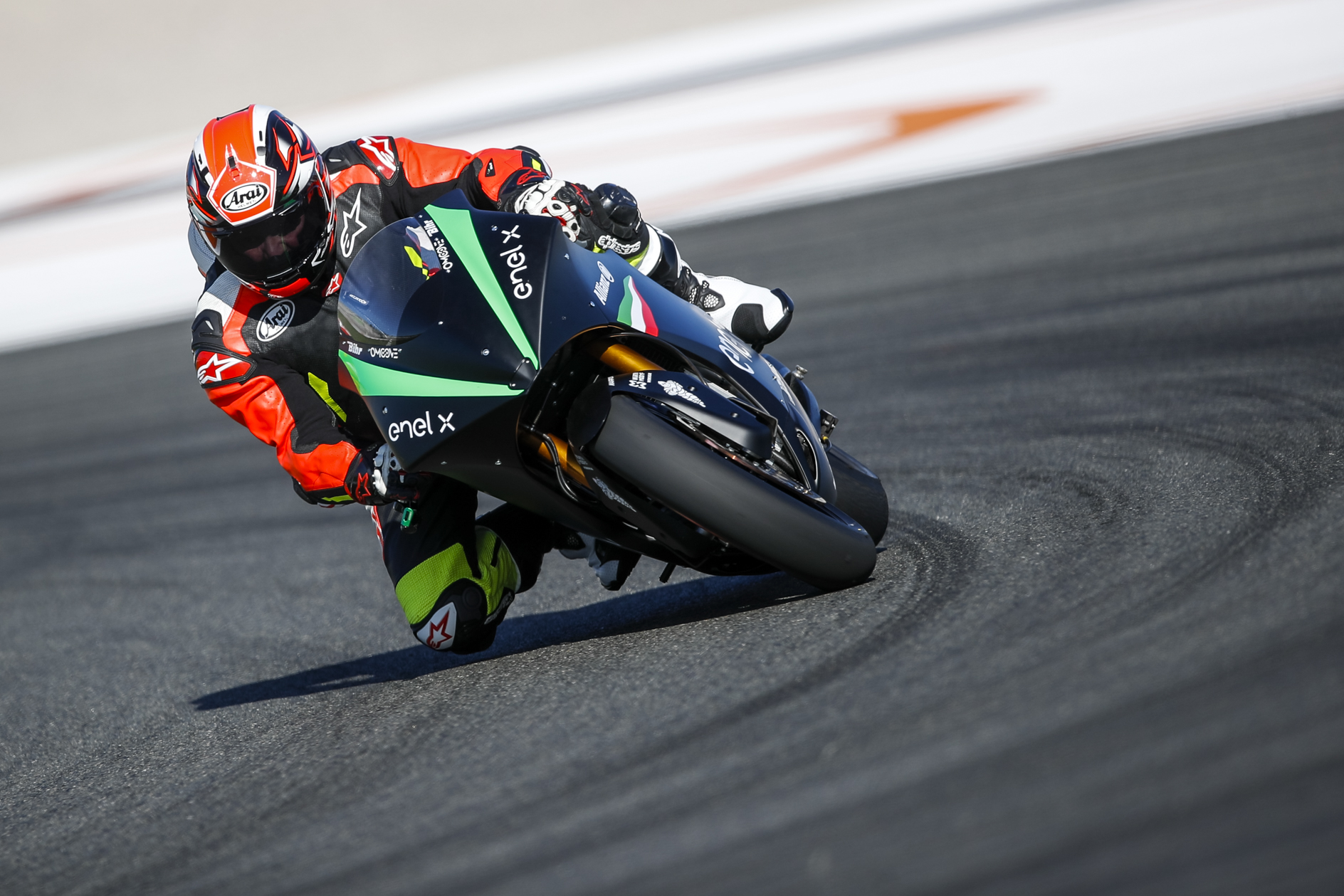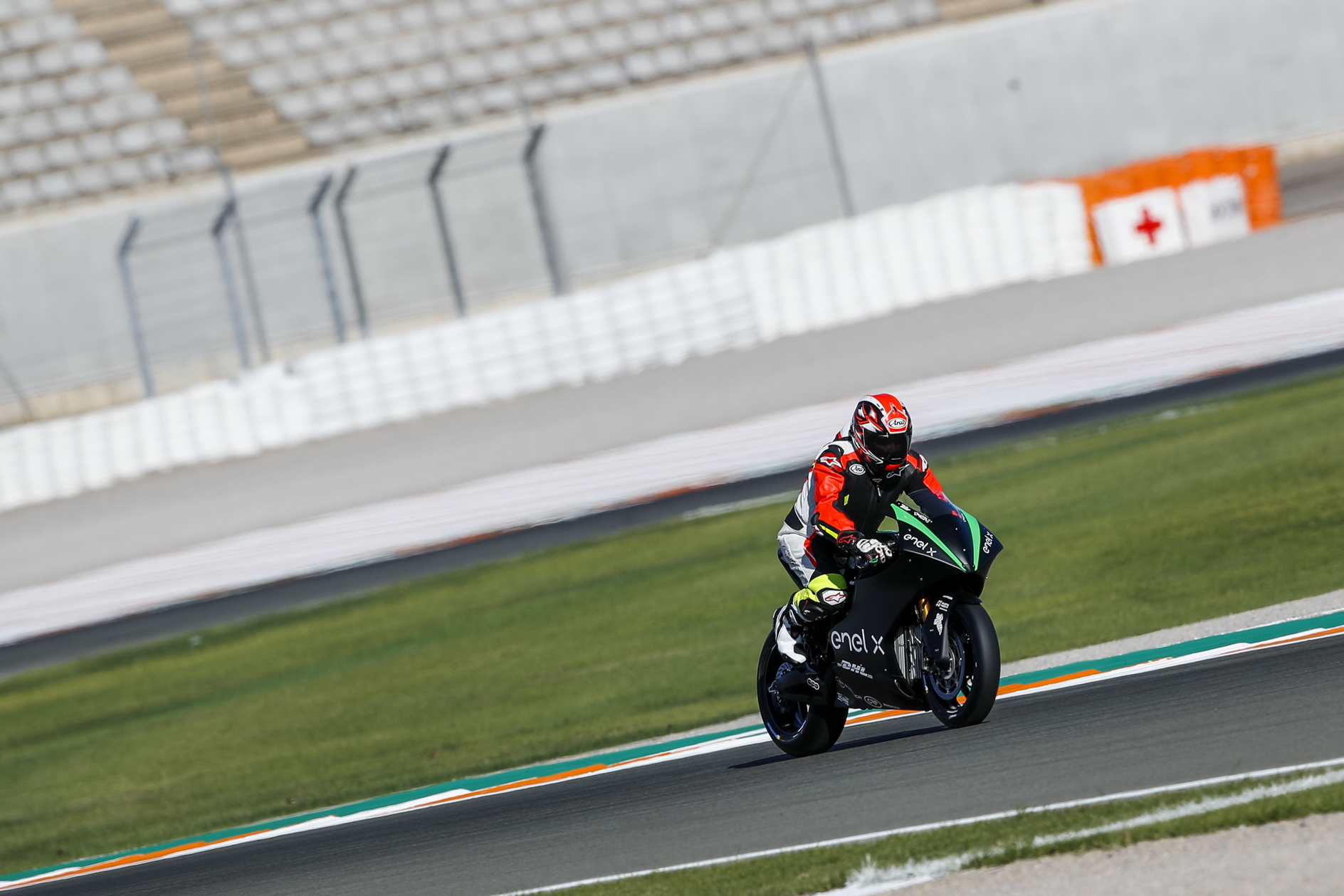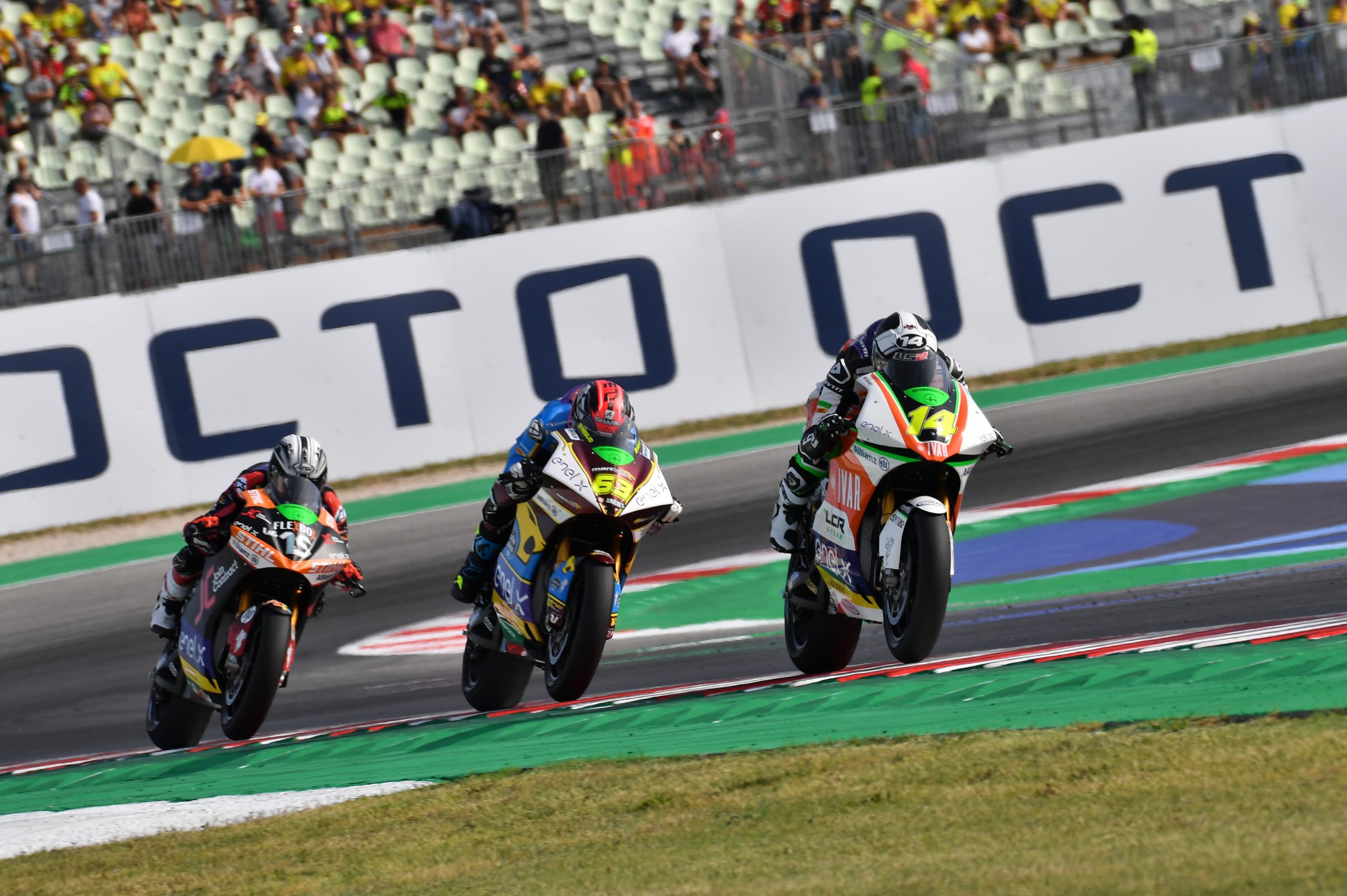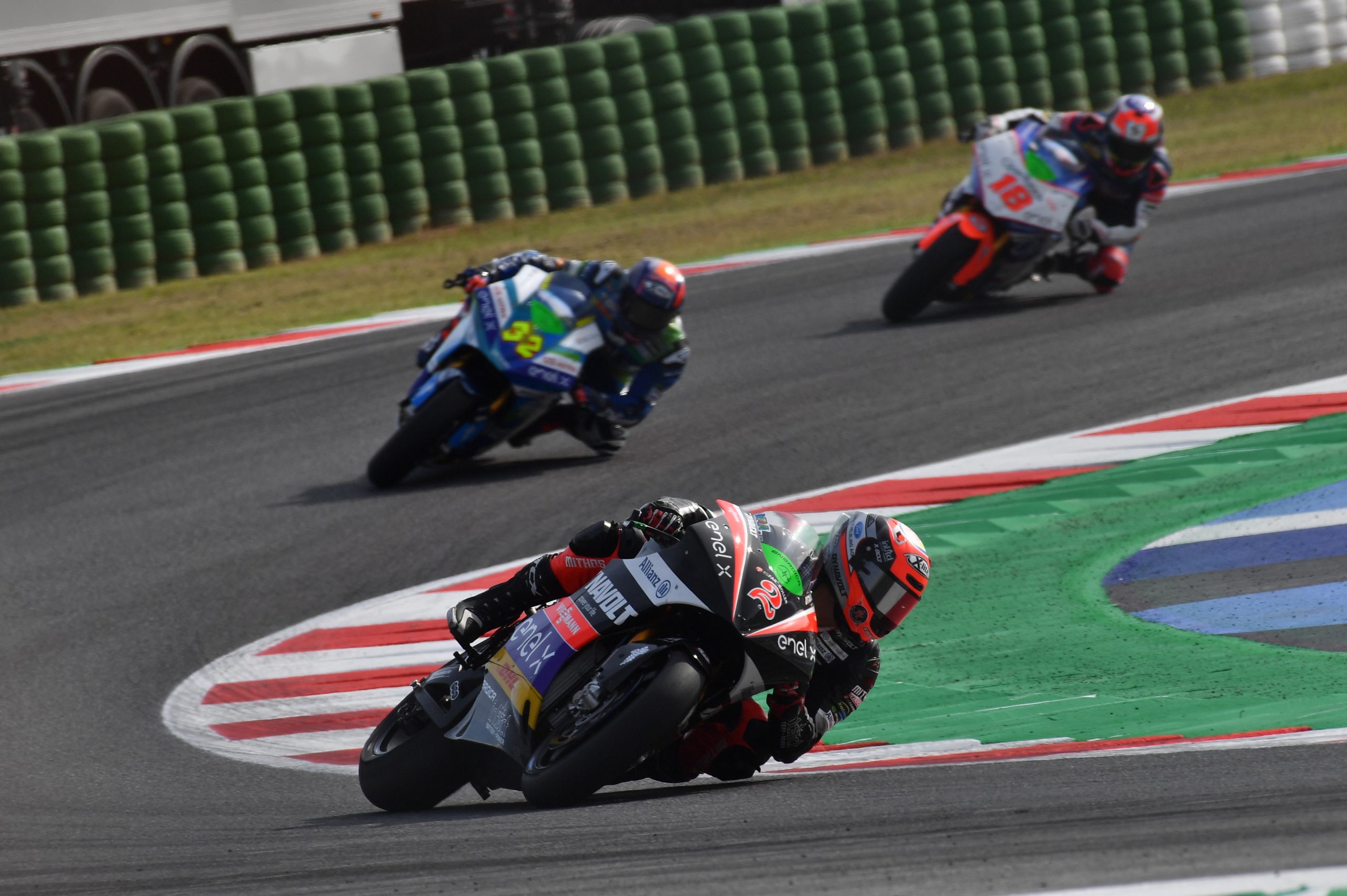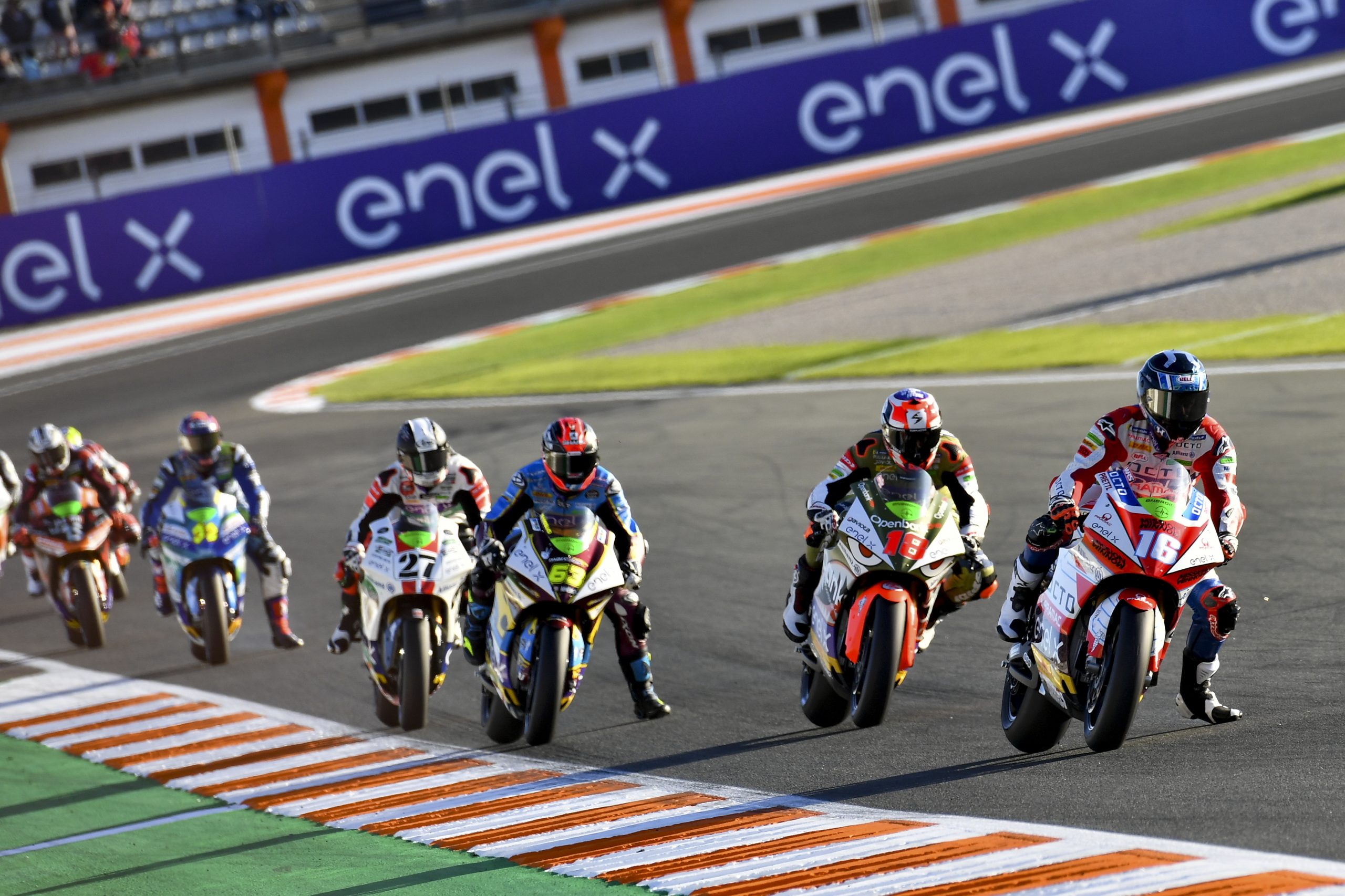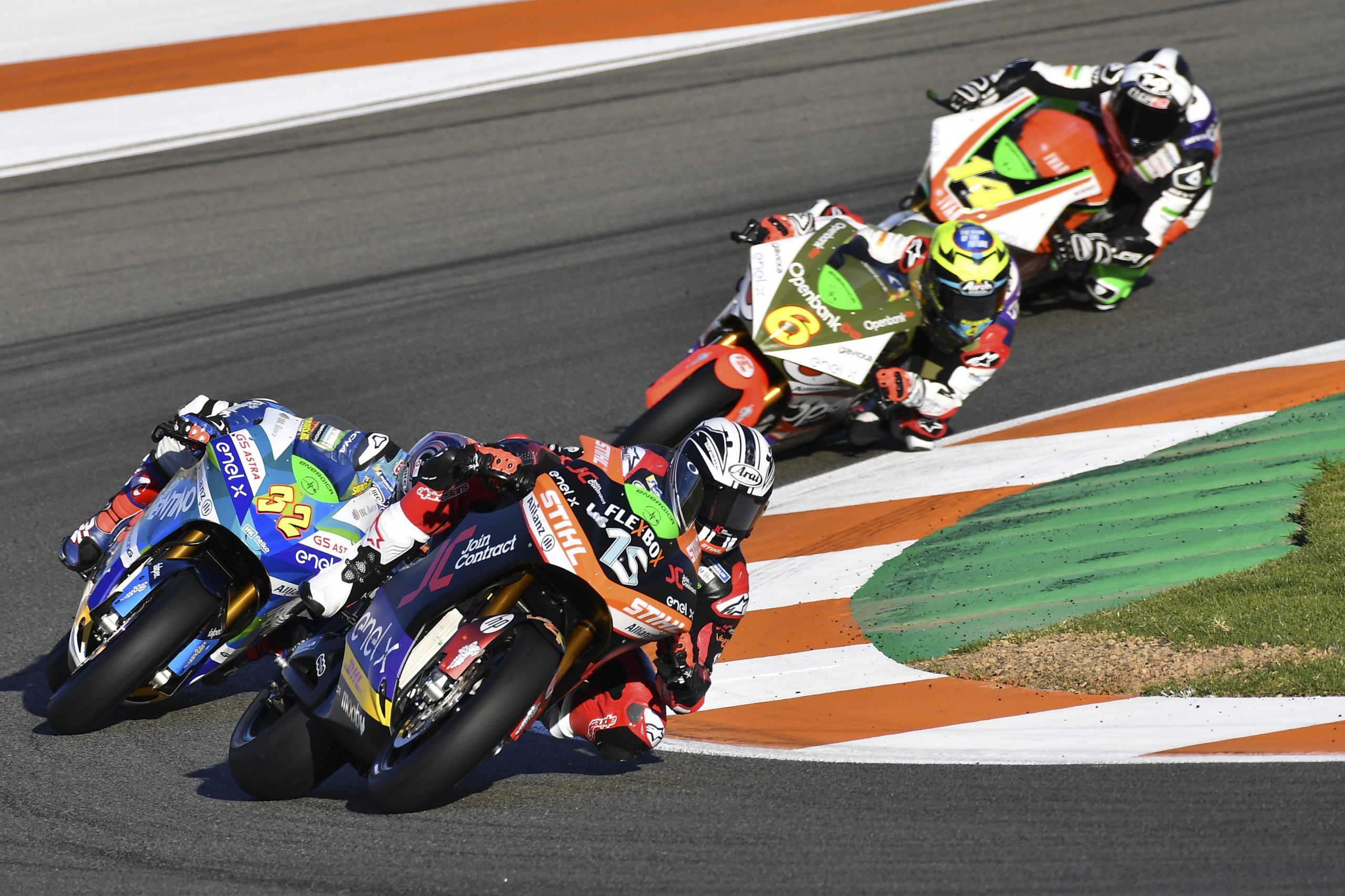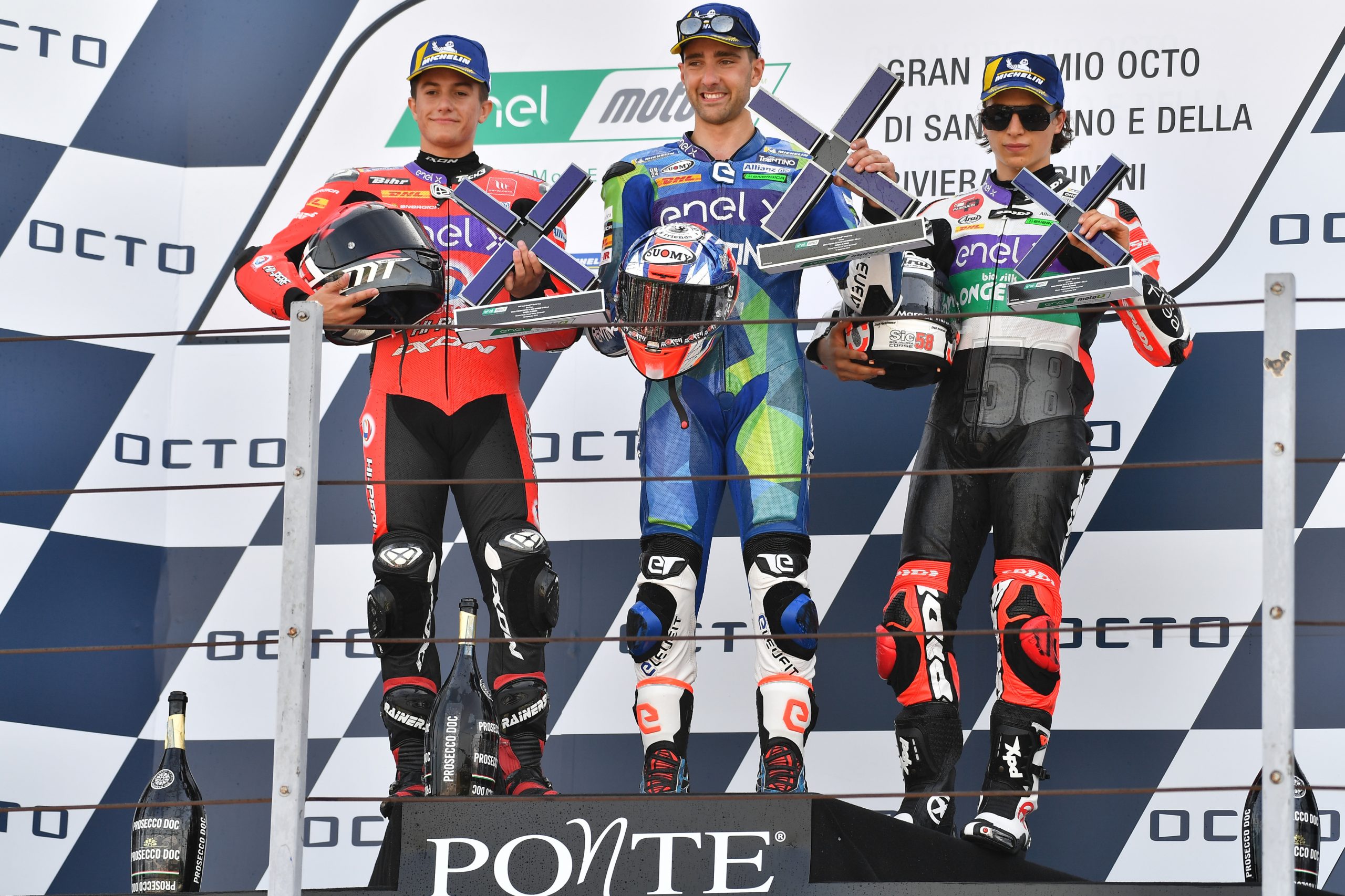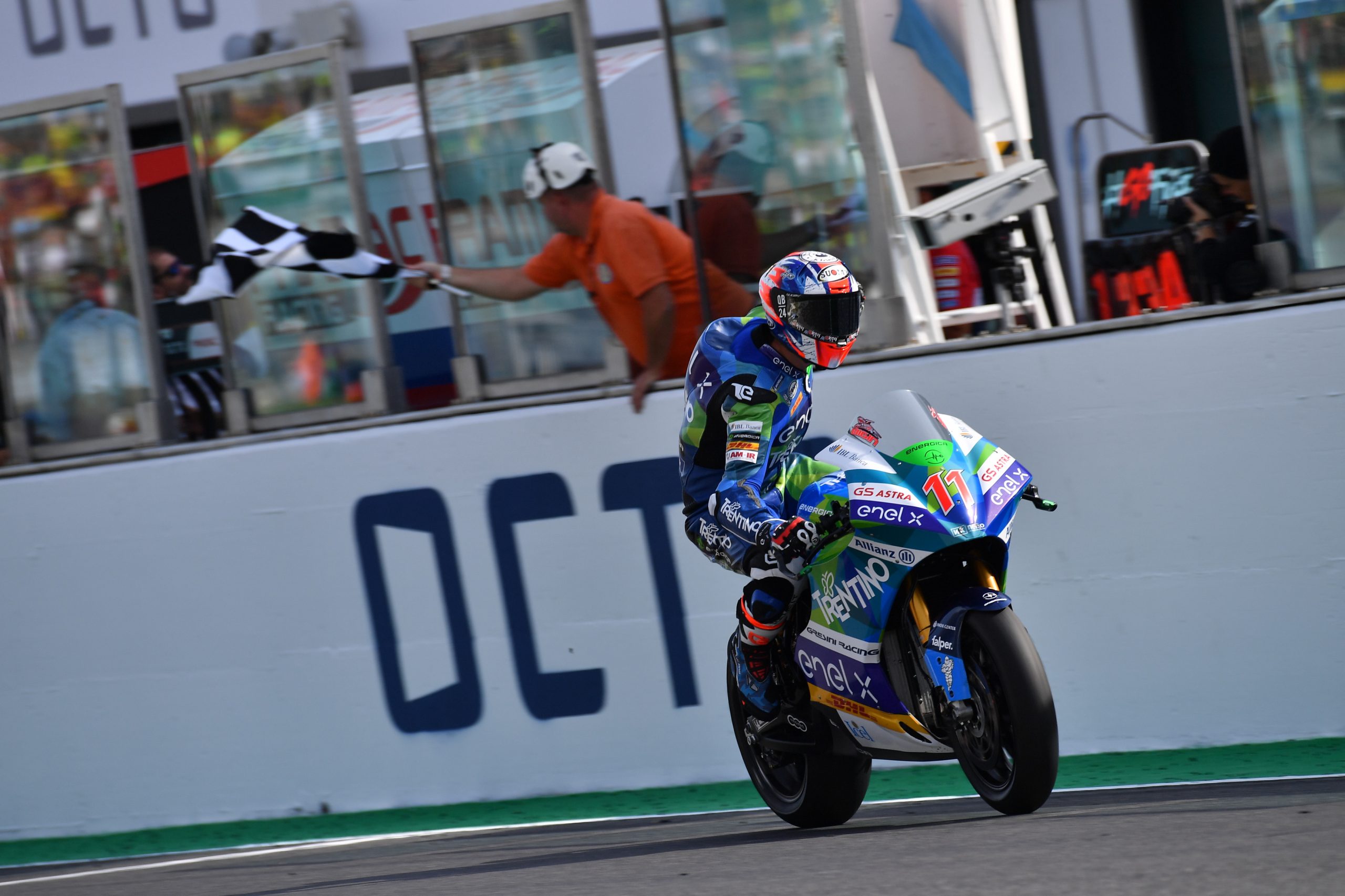We got a rather interesting invite just before Christmas – the chance for a test ride on the Energica MotoE race bikes that have been supporting MotoGP for the first time this year. Here’s how we got on…
Hands up if you’re been on an electric motorbike?
Not so many of us, is it? And if we narrow that down further, to a proper electric superbike, then the numbers will shrink even more.
Some of us will have had a spin on an electric scooter, maybe an Oset trials bike, and the Zero road bikes have been becoming more common, especially in places like London.
But a bike to match something like a Yamaha R1 or a BMW S1000RR, in electric form? Hens’ teeth mate.
They’ve just not been around in any meaningful sense till very recently, and while the four-wheeled world has a few electric hybrid supercars, the size and mass constraints of two wheels means there’s not really been anything like a Porsche 918 Spyder or even a Tesla Model S on the street.
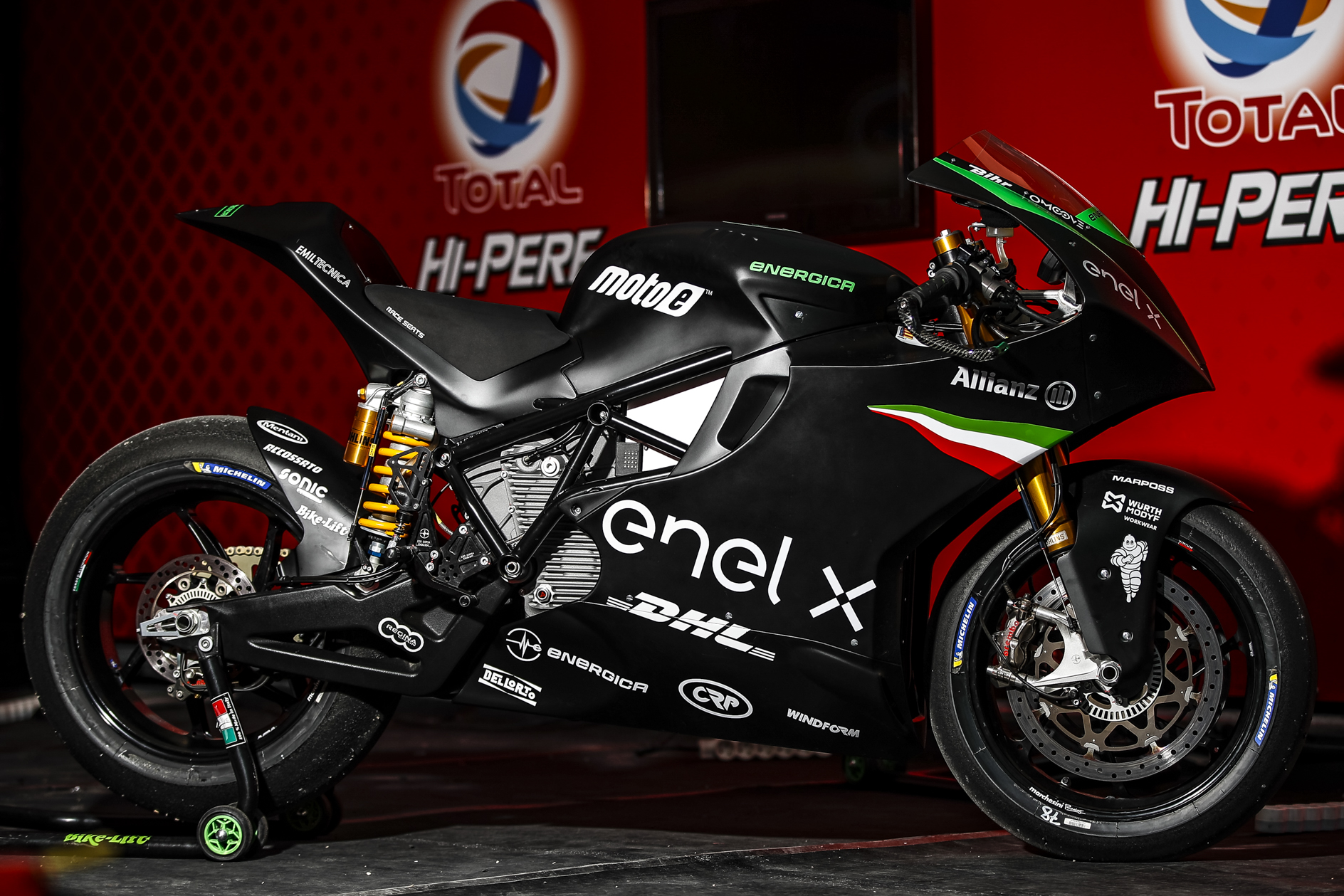
So as I board an Easyjet flight to Valencia…
On the final weekend of the MotoGP season, I’m jam-packed with anticipation.
Because I’m not just going to watch the last round of the 2019 season – I’m going to ride a rather unusual motorcycle too.
The MotoE electric-powered race series has finished its first season supporting MotoGP, and the organisers have invited a few journalists along to try the ‘control’ bike used in that series, the Energica Ego Corsa.
It’s a race bike, built on the base of the road-going Ego superbike, which is built in Italy by Energica and sold in increasing numbers worldwide.
First though,
First though, I get to spend a very pleasant weekend watching the racing at Valencia, including the MotoE race on Sunday. And I’m only a little bit discombobulated by the multi-bike pileup at turn four during the electric bike race…
We’re up bright and early on Monday morning though, and head to the now-silent track (the entire paddock is sleeping off the effects of the end-of-season party the night before).
The bikes are lined up, all charged and ready to go in their close-season black livery.
Before we’re set loose on the battery-powered racers though, we get a bit of a talking-to off the team bosses.
No-one wants to see a megabucks prototype electric racer barrelling into the gravel trap in flames, so we get a pretty sobering lecture on the perils here.
They’re making a big deal about the tyres, which seems a bit strange.
Custom-made Michelin slicks, designed for Valencia and this bike – surely they’ll be cock-on? Well, yes, but the problem is there’s a bit of a tightrope in terms of temperature, especially on the right hand side of the tyre.
Valencia is mostly left handers, and turn four is the first time you use the right side for a long time, and they’re worried that we’ll lose the front early doors there on this chilly November morning.
Indeed, that was the spot where the four-bike pileup occurred when I was watching the race yesterday.
Also, the tyres are built for top race aliens – they’re designed to dissipate the heat created by the likes of Bradley Smith going hard – and they need to be worked hard to stay up to temperature.
So there’s the tightrope – go too fast early on and you’ll crash at turn four.
But go too steady, and the slicks will dump all their heat and you’ll risk a crash anywhere on the track.
Yay.
It’s not quite what you need in your head at a gig like this, especially with so many other weird experiences coming atcha.
Never mind.
I get kitted up in my Alpinestars airbag suit and Arai lid, and wait my turn in pit lane. The nice team techs pull the tyre warmers off, wave me over, and I jump on.
Warming up,
I’d had a quick warm-up spin on an Energica road bike not half an hour ago, so am prepared for the lack of clutch and gear levers, and the silence of the bike while stationary.
The dash and switchgear is all novel though, with that proper racebike M&M assortment of coloured push buttons controlling stuff like engine braking and pit speed limiter, plus a fairly complex dash layout.
Obviously the old-school displays of engine revs, oil lights, temperature and the like are missing, and we just have coloured boxes with various technical readouts and a lap timer on show.
Ah well – off we go.
Down the strangely-deserted pit lane (the paddock is still slumbering) with that typical electric motor whine, then hard on the ‘gas’ and onto the track.
Now I’ve been here a few times, most recently for the Ducati Panigale V4S launch 18 months or so previously, so I’m fairly up on where it goes.
But I’m quite pensive about how the Energica machine will go round here.
The tyre warnings are fresh in my mind of course – but there’s a few other things preying on me.
The biggest worry is the weight of this thing – it’s around 258kg, which is a massive amount of mass for a proper race bike.
Short of one-make road-based race series like the Harley Sportster or BMW Boxer Cup, I can’t think of anything else which is sent out around a track carrying anything like this amount of timber.
Add on a slightly chunky winter-plumage Al, and you have more than a third of a tonne to manhandle around this very serious MotoGP-spec track.
But my worries evaporate after less than half a lap.
The first bend is a bit weird, and I can definitely feel the weight pushing through the braking zone. But the racebike-firm Öhlins suspension doesn’t blink, and I’m through turns two and three no bother at all.
I tiptoe around the right hand turn four, then get stuck in for the rest of the first lap, quickly settling into the MotoE groove.
A few things impress straight away.
The ‘throttle’ response is excellent, with a lovely, intuitive connection between your wrist and the rear tyre. That, plus the lack of any gear-changes makes it easy to put power down exactly where and when you want it. It’s like god’s own twist-and-go hyper-scooter, with a hefty dose of power and torque on tap.
And the Brembo brakes do a brilliant job considering the mass they’re dealing with – there’s plenty of stopping power at the brush of a fingertip, with stacks of control and feedback too.
That Öhlins suspension simply lets you get on with what you’re doing, and is particularly good on the brakes, where it controls the (what should be massive) fork dive superbly.
The low-down grunt is also very impressive coming through Valencia’s fiddly infield section – but the peak power isn’t overwhelming down the main straight.
The last time I was here, I had 215bhp on tap pushing a 195kg Panigale V4S, which was very lively indeed.
The Ego Corsa has about 160bhp, and with that 258kg mass, it feels like a superbike from a few years ago in terms of straight-line speed.
Having said that, the Valencia straight is still a monstrous thing to experience on here, the mighty three-phase motor shoving you along like the wildest roller coaster you could imagine…
Over the next few laps though, it’s the tyres which are probably the most impressive thing.
It’s not every day you get to ride on fresh, high-end race slicks – especially ones which have been custom-built for the bike and track you’re on. And the MotoE rubber only has to last for the short seven-lap sprint race which the series uses (the battery only gives about eight laps in total – which is why there’s no warm-up lap).
So they can be even stickier than if they had to last for a full 27-lap MotoGP race round here. The result is rubber heaven – all the grip you could want, with loads of feel and feedback, especially from the front end.
My five laps are over in the blink of an eye, and the chequered flag calls me back in.
I’m sweating hard under my Alpinestars despite the fresh temperatures, partly from the effort of muscling this big bus round here, but also because I’ve ended up pushing much harder than I thought I would be.
Make no mistake, this is a proper race bike…
Make no mistake, this is a proper race bike, no matter how quiet and fat it is – and the fact that the proper racers can get one round here in the same lap time as a Moto3 bike proves that.
The chassis (especially those tyres and brakes) gives a little insight into what the very best racebikes in the world feel like. And while the powertrain has the limits of being a less-mature technology compared with a petrol powered engine, it’s still very impressive indeed – and great fun to ride.
So – will MotoE increase the chances of you riding an electric superbike any time soon?
I’m not so sure.
The size, weight and energy density of batteries is orders of magnitude below that of hydrocarbon fuel, and while cars can afford a few cubic metres of spare space and a couple of hundred kilos of weight, bikes simply can’t do that.
If you’re dead set on 200bhp and sub-200kg mass, then you’ll be buying petrol for a while yet.
On the other hand, if you offered me the chance to ride a bike like this on a trackday, with fast-charging between sessions, I reckon it would be ace – especially in these days of every-tighter noise regs.
The Energica Ego road bike costs around around £23k – similar to a Panigale V4S – and with some track tweaks, you could definitely get close to the MotoE experience….
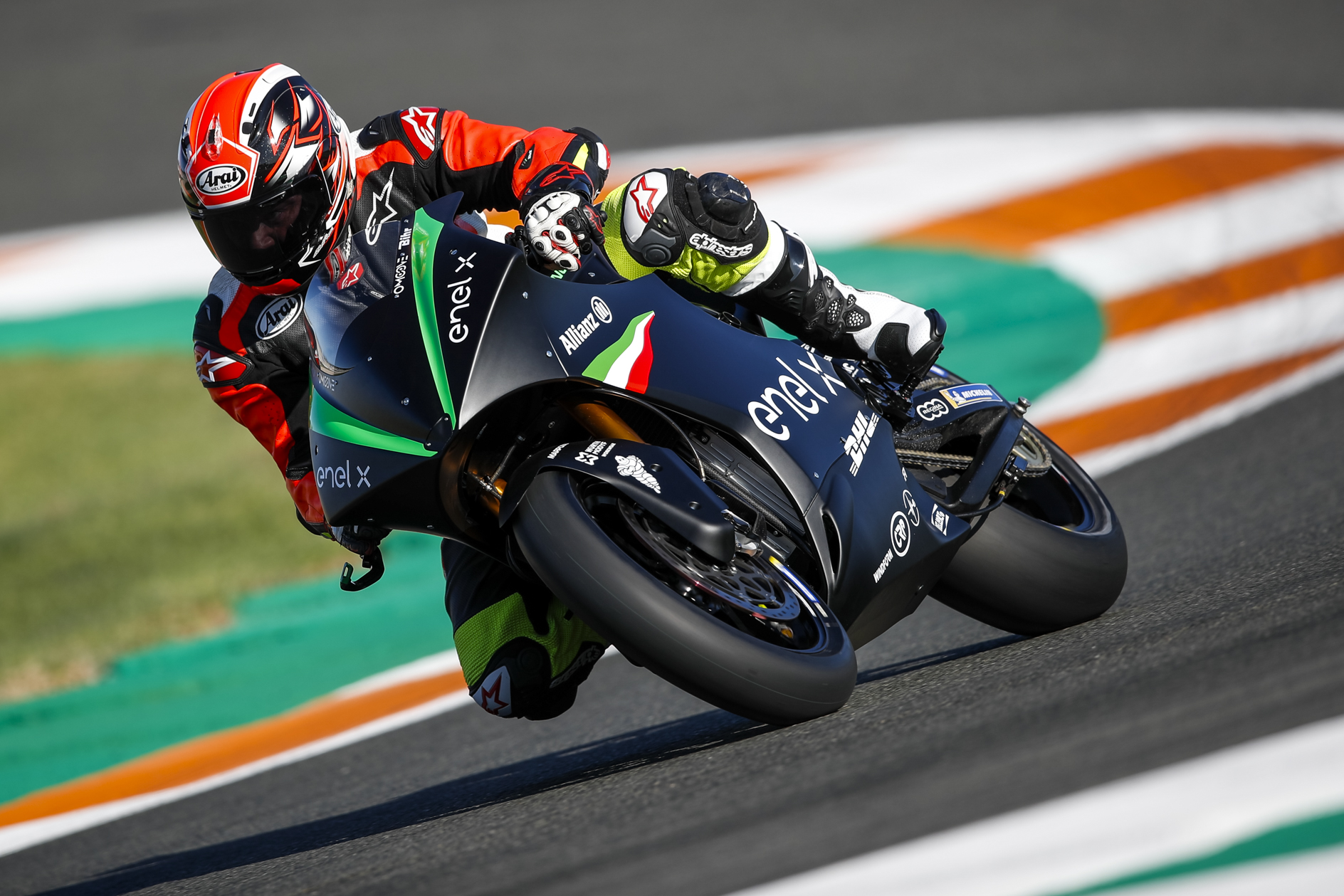
Frame
Beefy steel tube trellis design needs to be super-strong to handle the extreme weight of the battery pack, and uses the motor castings as extra strength around the swingarm pivot area.
‘Engine’
The powertrain is a hefty lump, but pretty simple. There’s no clutch and no gearbox either, since electric motors produce similar levels of torque over a very wide rev range, unlike internal combustion motors which only make peak torque for a small band of revs. The motor itself is a 300 volt three-phase permanent magnet AC unit, putting out around 160bhp peak power and a heady 250 Newton-metres of torque.
Just as vital is the battery pack, which holds 20kW/h of charge. For comparison, a current Nissan Leaf electric car holds twice that – 40kW/h, while a YTZ-10S 12-volt main battery for a Honda Fireblade holds just 102 W/h, 200 times less than the Ego’s battery pack. A YTZ-10S battery weighs 3kg, so you’d need 600kg of them to match the Energica’s high-tech lithium battery. And we wonder why electric vehicles are so heavy…
Suspension
No surprise to see Öhlins badges all round – but under the gold anodising is a pretty interesting setup. The front fork is a modified Road and Track unit, in a Suzuki Hayabusa fitment – so it’s designed for a big heavy fast bike from the off. The springing is much stiffer at 13-15 N/mm and the damping is also tweaked to suit. The rear shock is a more bespoke unit, with a single tube damper rather than the more delicate twin-tube designs used on lighter race bikes. Again, the spring rate is pretty hefty at 130-150N/mm. It’s operated by a tasty fabricated aluminium dual-sided swingarm.
Brakes
Italian firm Brembo has supplied a custom-made setup, which uses billet Monobloc calipers and 330mm T-drive steel discs up front. The nickel-plated four-piston radial mount calipers are the ones used for wet races in MotoGP up until a couple of years ago, and have titanium pistons, biting on Z04 pads.
Wheels
The wheels look like the Marchesini race rims used in the rest of the GP paddock, but they’re forged aluminium rather than the lighter magnesium versions. The aluminium construction makes them a bit tougher than magnesium, and better suited to the extra mass of the MotoE machines.
Tyres
The tyres are very special – custom-built Michelin slicks, specifically designed for the MotoE bikes, and tweaked for each separate track. The front is based on the MotoGP slick, with a stronger carcass construction for extra stability under braking. Out back is another Michelin slick, this time using the firm’s superbike rubber as the foundation. The heavier production-based series is more suited here, again, because of the extra weight of the MotoE bikes.
The final twist here is that because the MotoE races are so short (just seven laps), that the tyres don’t have to last very long at all. So the compounds can be much softer than would be possible if they had to run a proper 25-lap race. That balances out the compromises necessary for the extra weight, and means the tyres are perhaps the most amazing part of the MotoE riding experience.
MOTOE 2019 SEASON
The MotoE series ran for six races in Europe in 2019, as Dorna dipped a toe in the waters of electric racing.
The MotoGP organisers had apparently seen what happened in four-wheel racing, where Formula One has lost the initiative in electric racing to Formula E, and wanted to get in on the battery-powered action before someone else did.
But the whole thing nearly didn’t happen at all.
A devastating fire at a pre-season test in Jerez torched the whole mobile paddock which had been custom-built for the MotoE series. All the bikes, the charging infrastructure, the mobile pit building, spares, tools – an entire championship went up in smoke, after a short-circuit in the electrical circuits supplying the installation.
The Energica folks worked night and day though, and managed to rebuild the bikes and pit infrastructure in time for the German MotoGP in July at Sachsenring, with the remaining rounds at Austria, San Marino and Spain.
They also stuck to the original plan for six races, thanks to double race weekends at Misano and Valencia.
By the end of the first season, Energica had shown it could run the championship successfully, and the racing had been fairly well received.
Brit racer Bradley Smith pushed hard for the title, and ended up in second place in the championship, with Italian rider Matteo Ferrari taking the inaugural title at the final race.
So – MotoE isn’t quite ready to replace the petrol-powered racers just yet. But it’s definitely on the way to becoming a major part of the MotoGP circus.

